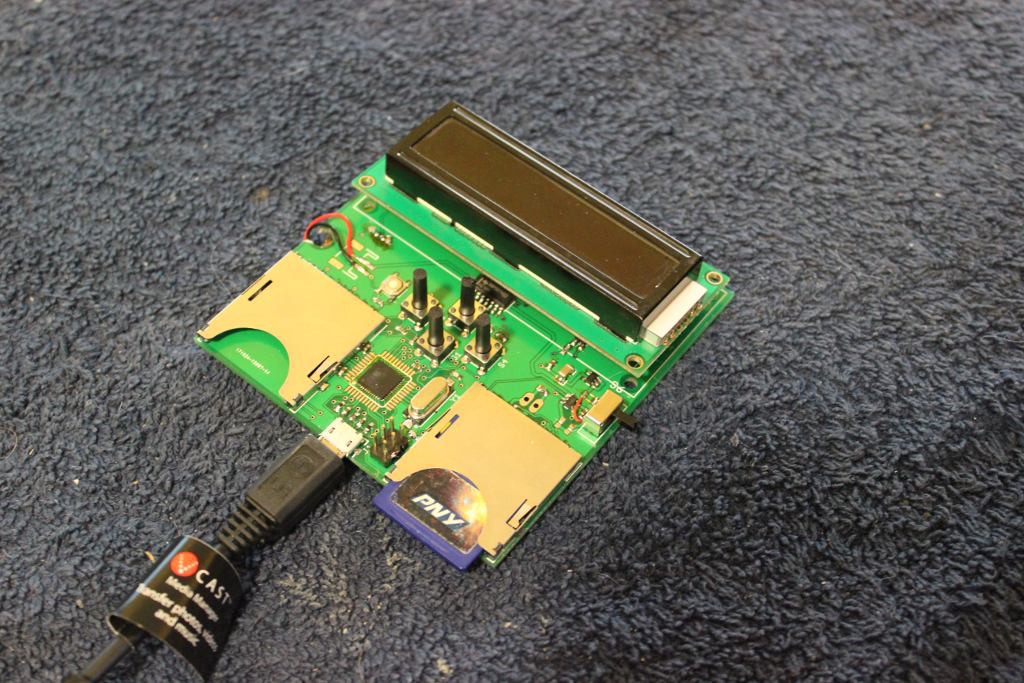Yesterday the parts FINALLY arrived from China. That's 22 days of waiting. I should have paid for faster delivery. Anyway, I've started populating the board and writing test sketches for each component.
Don't worry about the size of the board. This is the first rev, with all the components on one side. It'll get a lot smaller before I'm done.
Of all the components, and just one evening of soldering and debugging, here's what's working and what's not.
- Power supply works and provides 3.3V
- Power switch works
- LiPo charger works and after letting the battery drain I plugged it in for a bit and then unplugged it to make sure it had been charged.
- Microcontroller works, programming header works, and I can upload a sketch.
- USB works and I can upload a sketch that acts like a USB keyboard and prints out whatever I want.
- Buttons work. I wrote a sketch that prints to the keyboard which button (including SD Card presence) is active.
- Arduino reset button works.
- Shift Register works. I have a sketch that can successfully read in all 8 bits and print out a hex value.
- The right SD card works and I can create and delete files.
- The LCD backlight works and I can turn it on and off.
It's not all roses, though. There are some parts that aren't working yet. They're critical parts, though.
- The left SD card isn't working. Need to recheck connections.
- The LCD isn't working. I have ordered 3.3V tolerant LCDs and think that may be the problem, but I also tried driving the whole thing over USB at 5V and wasn't successful. It may be the LCD, too, which I scavenged.
- The random generating circuits aren't working. If I hold my finger next to the floating pin I see some randomness on the scope, but otherwise it's just ground. And even when I get randomness it's not above the threshold voltage for the shift register, so it doesn't get read in. I don't know what to do about this yet. May have to pore over datasheets. In the mean time, I'll cheat a little by using the Arduino pseudo-RNG just so I can get everything else running. Then I'll switch over to the true RNG when that is working.
The next steps are diagnosing and fixing the three outstanding issues, and writing firmware for the device, including the UI.
 Bob Baddeley
Bob Baddeley
Discussions
Become a Hackaday.io Member
Create an account to leave a comment. Already have an account? Log In.